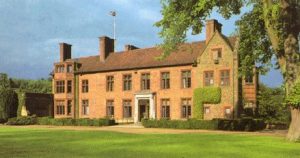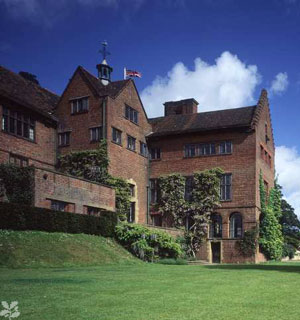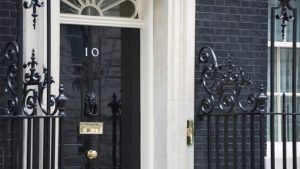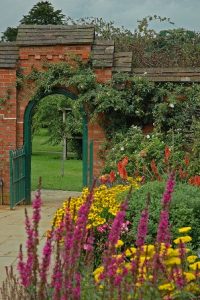
Residences
The House and Gardens

February 15, 2009
Brief excerpts taken from Chartwell, published by The National Trust. You can order the book from the Chartwell Shop. It is full of description and colour pictures of every aspect of the house and its grounds.
The House
Bought by Churchill in 1922, Chartwell was his home from 1924 for 40 years. The setting captivated him immediately: a shallow valley enclosed to the west by Crockham Hill, to the east by Toys Hill, both clothed in ancient beech trees. In the lap of the valley was a modest lake fed by the Chart Well, from which the house set into the western hillside took its name. But most important to Churchill was the panoramic view south over the gentle landscape of the Weald of Kent. Henry VIII is said to have slept in an oak-panelled room (now gone) in the house, while courting Anne Boleyn at Hever Castle. It is only 25 miles from Westminster and could be reached by lunch guests from London in less than an hour by car.
“No client that I have ever had, considering his well-filled life, has ever spent more time, trouble, or interest in the making of his home than did Mr. Churchill.”– Philip Tilden
Churchill hired Philip Tilden to transform the house into his home. An Eighteenth-century wooden doorcase, bought from Thomas Crowther, a London antique dealer, frames the front door. Churchill to Tilden: “There is a very striking oak door in No.– South Grosvenor Road, a home belonging to the Duke of Westminster, which is certainly very suggestive and capable of adaption.”

2024 International Churchill Conference
A completely new wing was added which Churchill proudly called ‘my promontory.’ It contains three of the largest and most attractive rooms in the house. On the top floor is a barrel-vaulted bedroom for Clementine; below is the long Drawing Room; and below that the Dining Room, a full storey lower than the ground floor on the west front because of the steeply sloping site. Churchill had a painter’s love of sunlight and wanted the windows throughout to be as large as possible. Each room has windows on three sides that give the rooms a light and airy feel and provide views south over the garden and the Weald of Kent.
Churchill’s study is where he worked on five budgets as Chancellor of the Exchequer from 1924 to 1929, and dictated a stream of memos to his ministerial colleagues on every subject, whether large or small. Out of office in the 1930’s, he brought to this room worried political and military advisers to discuss the spread of Fascism in Europe. Here he rehearsed the speeches with which he tried to stir the House of Commons and the Chamberlain government to action. And in this room he conceived his vast literary output. Often late into the night he would stride up and down dictating page after page to a chain of secretaries. The last volumes of the World Crisis, Marlborough, the Second World War and A History of the English-speaking Peoples were all largely written in the Study. The study is furnished with, the mahogany table inherited from his father, the long lectern at which he preferred to work standing up, a perpetual movement clock, the Union Flag raised in Rome on 5 June 1944, and other items of interest, including many family photographs.
On view to visitors are the Hall and Lobby, Drawing Room, Inner Hall, The Library, Sitting Room, The Staircase, The First Floor Corridor, Lady Churchill’s Bedroom, the Ante-Room (china, medals and other memorabilia on display), the Landing, Museum and Uniform Rooms (originally guest rooms, now display photographs and documents, gifts and awards, uniforms and robes) and the Study, Dining Room, Kitchen, and Exhibition recounting Churchill’s public and private life. The home is filled with paintings, pictures, sculptures, ceramics and antique furniture.
As you explore the rooms in the house that remain as they were in Churchill’s time (complete with daily papers and his famous cigars), and experience unique displays and sound recordings, you will discover not only a man that influenced key moments in 20th century history, but a man who also had a private life full of the more usual domestic trials and triumphs.
The Gardens
Churchill wrote to his wife: “I think it is very important to have animals, flowers and plants in one’s life while it lasts.” The Chartwell grounds gave him all these in profusion for over 40 years. Here he could relax completely, build a wall, feed a duck, paint, write, or simply enjoy the scent of a magnolia.
The landscape around Chartwell is ancient, becoming gradually more modern as one approaches the house. Oldest are the gentle hills to the west and east and on to the distant view of the Weald of Kent.
Subscribe
WANT MORE?
Get the Churchill Bulletin delivered to your inbox once a month.




